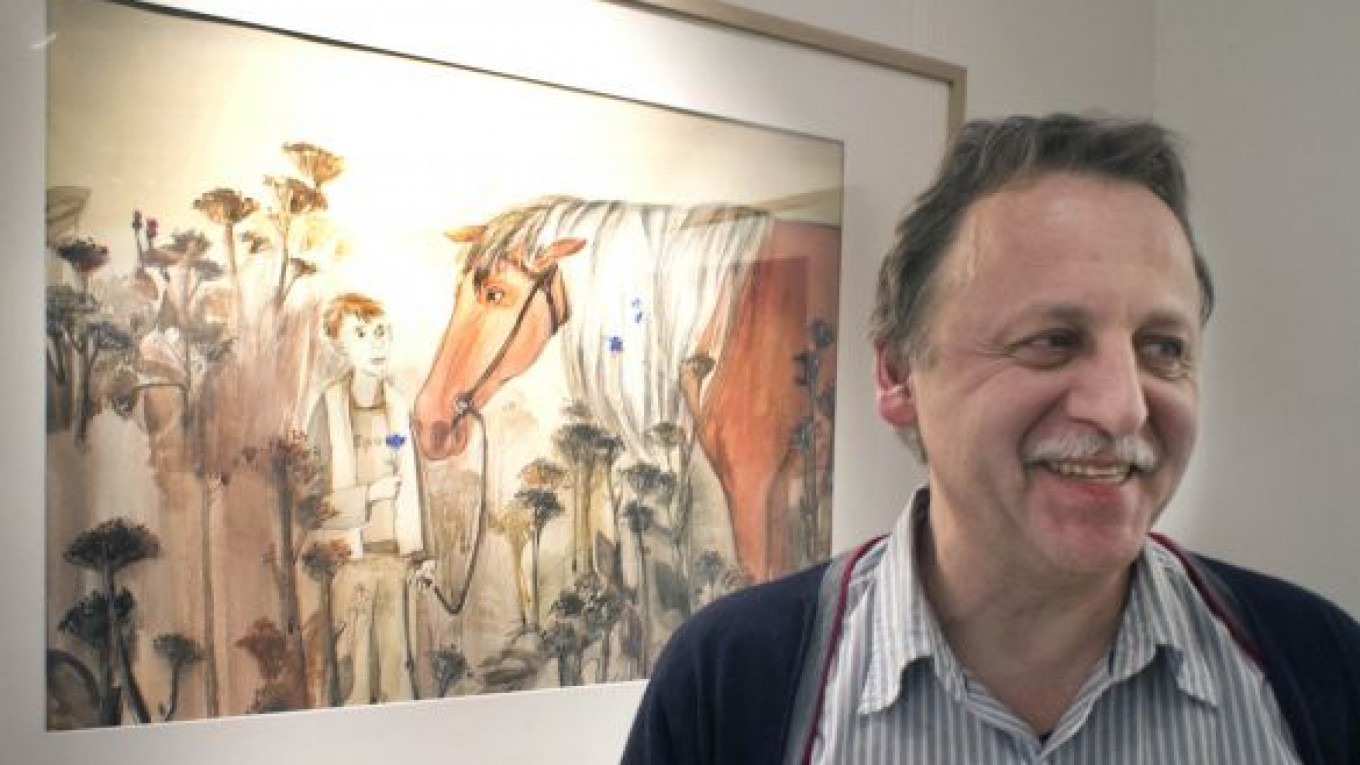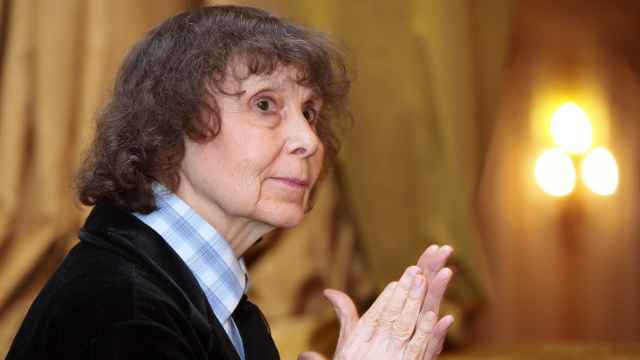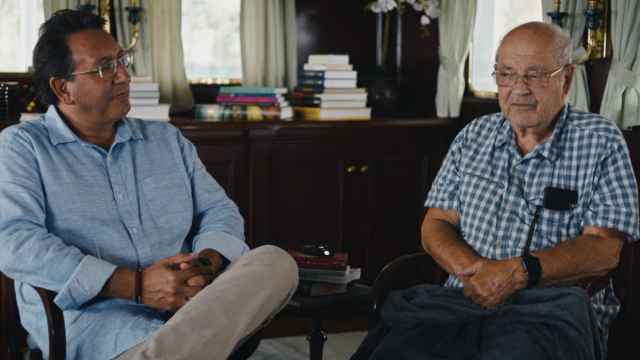For many Muscovites, the Russian provinces are a distant land, visited or passed through rarely, if at all, and for the most part experienced secondhand, through anecdotes, news stories or art. Yet often, the art in which they do take center stage seems only too eager to present them as drab and hopeless places, a claim perhaps best summed up with the wailed refrain in Chekhov's "Three Sisters" of "To Moscow! To Moscow! To Moscow!"
But thanks to the Veresov Gallery's ongoing exhibition of watercolors by Valery Arkhipov, titled "Provincial Stories," this typically bleak view of the Russian provinces has been washed away in favor of color, humor and liveliness that are both refreshing and fascinating in equal measure.
What is most striking on first viewing the paintings is that they are brimming with hustle and bustle. There is a sense that we as viewers are peering not on static snapshots but on entire scenes that our imaginations construct around them. This is something that in Arkhipov's own words can "undoubtedly" be attributed to his background and personal interest in film. The painter is, notably, also the dean and professor of the Russian State Institute of Cinematography.
"The influence of cinematography can be seen not only in the action depicted, but also in the choice of topics, in the dramaturgy of one situation or another, and the character development," he told The Moscow Times. "All of these things shape the final outcome of a painting and its mood."
So what in particular about the provinces interests Arkhipov and inspires him to paint? In fact, as he explained, the business of portraying real rural lives in action is not something which can be tied down to particulars. This is due to the diversity of the people who are living in them.
"How people live, how people die, what they think about, what they see, what they eat and drink, what they speak about, it's the phenomenon of the person himself that's interesting," Arkhipov said.
It is precisely this sheer variety of individual personalities and scenarios which forms the vibrant patchwork of characters that we meet in the works, from old women selling their wares at the market to fishermen, farmers, and femme fatales applying red lipstick, to name just a few.
"I can sit for hours on end in any place and examine the people, the details of their clothing, their characters, their behavior, the sparkle or sadness of their eyes," Arkhipov said.
This idea of "sparkle or sadness" as closely linked is something that is inescapable in the provincial stories. Painted between 1996 and 2013, they convey the flux between a post-perestroika Russia and its traditional rural counterpart with a crucial blend of sorrow and humor which Arkhipov sees as integral "because life is so full of things which are rough, or terrible or simply not funny. In our provincial life, without a sense of humor you'd die. You only have to read Dovlatov, Aksyonov, Sokolov and it all becomes clear."
It seems that his blending of artistic influences like film, literature and paintings, along with his own innate interest in the individual narratives, is what enables Arkhipov's works to successfully straddle such opposite emotions. But for many artists the theme of the Russian provinces is still an extremely daunting one, with such an honest yet optimistic portrayal being quite rare.
Arkhipov said that this is a result of the complicated nature of the provinces, especially to the eye of the outsiders, whose works tend to be based on straight observations and recreation of provincial beauty, and don't probe into the social frameworks that lurk beneath the surface.
"The provinces are such a complex theme. Most opt for the easier genre of landscapes, portraits, or still life," he said.
But in his own "Provincial Stories," to take away the people and paint the empty countryside would be to lose the main ingredient of humanity which brings with it the sorrow, the humor and all the rest. For Arkhipov, the places cannot be separated from the lives that people live in them.
So was it his original intention to compile a sort of "La ComОdie Humaine" style catalogue of the Russian countryside? Not at all.
"Picasso once said, 'When I know at the start of a work what its outcome will be, it's of no interest to me to paint it.' This is a creative process. It can succeed or not succeed, and perhaps the result will be completely opposite to what was intended," Arkhipov said.
For Arkhipov, then, painting is not about the aim of the work or what it is meant to convey, but the journey itself — an artistic philosophy that is fittingly echoed in the life philosophy of the vast array of characters it creates.
The "Provincial Stories" exhibit runs until May 5 at the Veresov Gallery, located at 14/2 Leningradsky Prospekt. Tel: +7 495-937-3371. .
Contact the author at artsreporter@imedia.ru
Related articles:
A Message from The Moscow Times:
Dear readers,
We are facing unprecedented challenges. Russia's Prosecutor General's Office has designated The Moscow Times as an "undesirable" organization, criminalizing our work and putting our staff at risk of prosecution. This follows our earlier unjust labeling as a "foreign agent."
These actions are direct attempts to silence independent journalism in Russia. The authorities claim our work "discredits the decisions of the Russian leadership." We see things differently: we strive to provide accurate, unbiased reporting on Russia.
We, the journalists of The Moscow Times, refuse to be silenced. But to continue our work, we need your help.
Your support, no matter how small, makes a world of difference. If you can, please support us monthly starting from just $2. It's quick to set up, and every contribution makes a significant impact.
By supporting The Moscow Times, you're defending open, independent journalism in the face of repression. Thank you for standing with us.
Remind me later.






